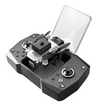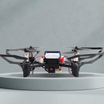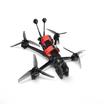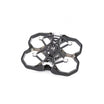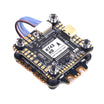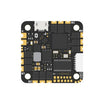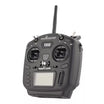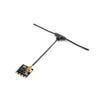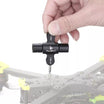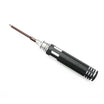The battlefield is changing. Drones now dominate the skies, hypersonic missiles travel faster than ever, and traditional defence systems struggle to keep up. In this rapidly evolving scenario, nations are racing to develop new strategies that can counter modern aerial threats. India is no exception.
Recognizing the urgent need to adapt, the Indian Army, in collaboration with the Centre for Land Warfare Studies (CLAWS), recently hosted a high-profile seminar in Pune.
Titled “Air Defence in Modern Warfare: Lessons and Future Capabilities,” the event became a think tank for military strategists, policymakers, and defence experts. The primary focus? How India can strengthen its air defence against threats like unmanned aerial systems (UAS), precision-guided missiles, and hypersonic weapons.
The New Face of Warfare: The Rise of Drones and Hypersonic Weapons
Warfare is no longer just about firepower—it’s about technology. Drones, once used for surveillance, have now become lethal weapons capable of carrying out precision strikes. Swarm drones, in particular, pose a significant threat, overwhelming traditional air defence systems with sheer numbers.
And it’s not just drones.
Hypersonic weapons, which travel at speeds exceeding Mach 5, can bypass most missile defence shields before a country even has time to react.
Recent conflicts, like the war between Russia and Ukraine, have provided critical insights into these challenges. Ukraine has successfully defended itself using a mix of advanced missile defence systems, including S-300, Patriot, NASAMS, IRIS-T, and SAMP-T. These have helped neutralize Russian air strikes.
But it’s not just about intercepting missiles—Russia’s use of advanced Electronic Warfare (EW) systems has been a game-changer. By jamming enemy drones and disrupting communication networks, Russia has demonstrated how non-kinetic warfare is just as crucial as traditional weapons.
However, the introduction of fibre-controlled FPV drones—drones that are controlled via optical fibre cables rather than radio signals—has presented a new challenge. Traditional electronic warfare tactics, such as jamming or signal interference, do not work against these. This is a clear reminder that air defence strategies need to evolve constantly.
Also read: How the Namo drone didi yojana is transforming agriculture.
India’s Response: A Future-Ready Air Defence Strategy
For India, the Pune seminar was more than just a discussion—it was a wake-up call. With the increasing use of drones by adversaries and the rising threat of precision missile attacks, it is clear that India must develop a robust, multi-layered air defence system.
One of the biggest takeaways from the event was the need for a comprehensive Counter-Unmanned Aerial System (C-UAS) network.
Unlike traditional missile defence systems, C-UAS focuses specifically on neutralizing drone threats. India has already made significant progress in this area, developing indigenous anti-drone solutions through collaborations between the Army Design Bureau (ADB), private defence enterprises, and innovative start-ups.
Apart from countering drones, India’s strategy must also focus on integrating advanced electronic warfare (EW) systems. The ability to jam enemy communications, disable GPS signals, and disrupt drone operations will be just as crucial as missile defence systems in future wars.
Moreover, an advanced Command-and-Control (C2) framework is essential to ensure a swift and coordinated response against aerial threats. A well-connected network that can relay real-time intelligence and intercept threats in seconds can make all the difference.
Also read: Tethered drones: The key to unlimited flight time.
Self-Reliance in Defence: India’s Indigenous Innovations
India’s push for self-reliance in defence, under the Atmanirbhar Bharat initiative, has gained momentum. Today, Indian companies are developing cutting-edge solutions that rival global defence technologies.
From hybrid C-UAS systems to next-generation electronic warfare tools, India is stepping up its game. The defence sector is also witnessing a surge in collaborations between the military and start-ups, leading to rapid advancements in indigenous defence capabilities.
For instance, new anti-drone systems that combine AI-powered detection, laser-based interception, and signal disruption technologies are being developed domestically. These innovations will play a crucial role in securing India’s airspace in the coming years.
The Road Ahead: Strengthening India’s Air Defence Network
The Pune seminar made one thing abundantly clear—air defence is no longer just about surface-to-air missiles. It is about having an interconnected, multi-layered system that can detect, intercept, and neutralize threats before they cause damage.
India’s roadmap for air defence must include:
-
Widespread deployment of C-UAS systems to protect military installations and critical infrastructure from drone attacks.
-
Enhanced electronic warfare capabilities to disrupt enemy communication and disable drones in real-time.
-
Integration of AI and automation to improve threat detection and response times.
-
Continued investment in indigenous defence technology to reduce reliance on foreign systems and ensure long-term security.
Conclusion: Staying Ahead in the Defence Game
Modern warfare is evolving at an unprecedented pace. The rapid development of drones, hypersonic missiles, and electronic warfare technologies means that no country can afford to rely on outdated defence systems. India has already taken significant steps in preparing for the future, but the journey is far from over.
The Pune seminar was a crucial milestone in shaping India’s air defence strategy. With continued innovation, stronger defence collaborations, and an unwavering commitment to self-reliance, India is well on its way to building a future-ready air defence system that can withstand any challenge.
The question is not whether India is ready for modern warfare—it is how quickly we can adapt and stay ahead of the game.

